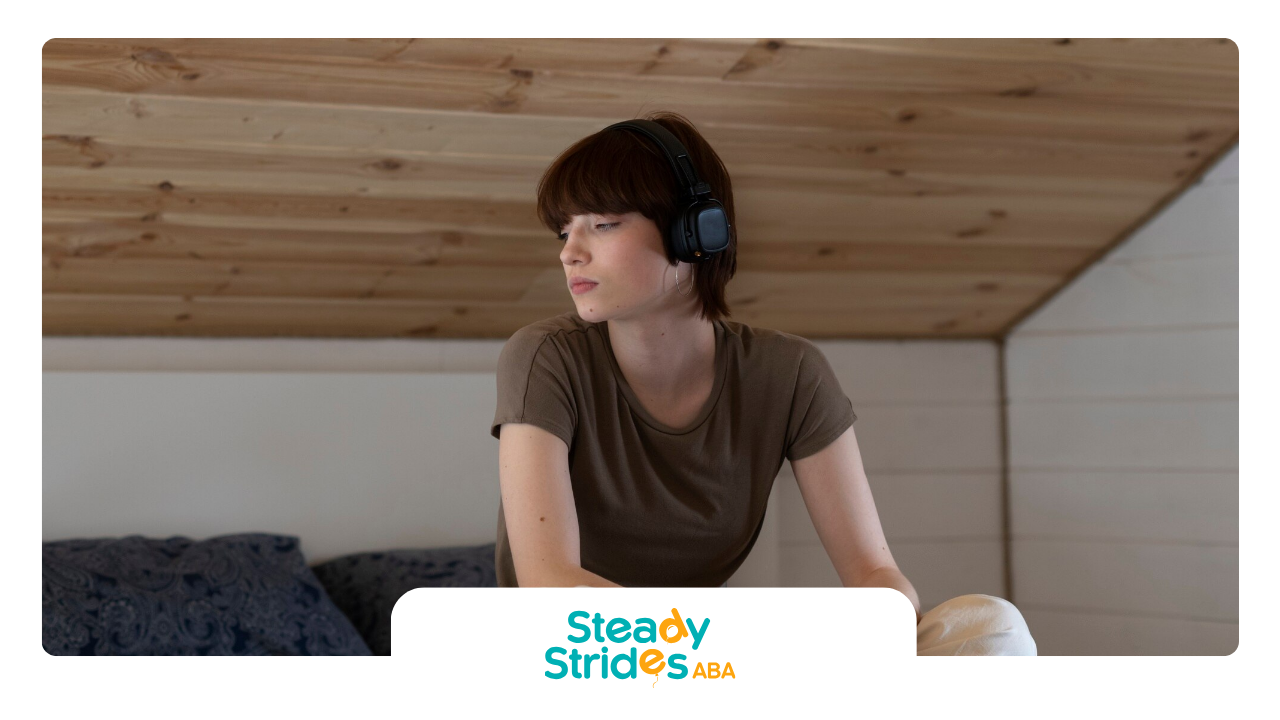This is a subtitle for your new post
Understanding ABA Therapy for Teens
Benefits of ABA Therapy
Applied Behavior Analysis (ABA) therapy is a highly effective form of treatment for teenagers with autism. This approach focuses on improving essential skills that significantly enhance the quality of life for adolescents. Key benefits of ABA therapy for teens involve enhancements in communication, social interactions, attention, and academic performance.
For instance, ABA therapy can help teens with autism develop critical daily living skills promoting independence. These include practical tasks like navigation, shopping, and personal hygiene. The therapy's emphasis on tailored interventions ensures that each teenager's unique needs are met, leading to relevant and effective outcomes.
Individualized Treatment Plans
One of the standout features of ABA therapy is its focus on individualized treatment plans. These plans are specifically designed to cater to each teenager's unique strengths and needs, ensuring that the interventions applied are both relevant and beneficial. This personalized approach enables therapists to better address the specific challenges faced by each adolescent, whether they are struggling with social, communication, or other behavioral skills.
ABA therapy for teens is not a one-size-fits-all solution. Instead, it emphasizes the creation of tailored treatment plans that utilize evidence-based strategies to produce measurable improvements. This approach not only focuses on enhancing crucial life skills but also involves parents and caregivers in the treatment process, ensuring long-lasting effectiveness and integration into daily life.
For more details on how tailored treatment plans are created and implemented, visit our article on ABA therapy goals for teens.
| Key Benefit | Description |
|---|---|
| Improved Communication | Enhances ability to express needs and interact with others. |
| Social Interaction Skills | Develops ability to engage in social settings and understand social cues. |
| Academic Performance | Supports attention and focus, leading to better academic outcomes. |
| Daily Living Skills | Promotes independence in navigation, shopping, and personal hygiene tasks. |
| Parental Involvement | Ensures lasting effectiveness through collaboration with parents and caregivers. |
The benefits and individualized approach of ABA therapy make it a valuable treatment option for teenagers with autism. For further information on the techniques used in these plans, check our article on ABA therapy techniques for adolescents.
Key Components of ABA Therapy
Applied Behavior Analysis (ABA) therapy is intricate but effective for teenagers with autism. Here, the spotlight is on creating individualized treatment approaches and employing various techniques to address unique needs.
Tailored Treatment Goals
ABA therapy emphasizes individualized approaches tailored to each teenager's strengths and challenges. Every session aligns with specific goals suitable for the teenager's age and needs. Behavior Analysts oversee these interventions, ensuring they incorporate real-life situations to foster the mastery of life skills.
| Factor | Details |
|---|---|
| Individualization | Tailored to strengths and needs |
| Integration | Goals aligned with age and unique challenges |
| Supervision | Qualified Behavior Analysts oversee |
Techniques and Strategies
ABA therapy involves various techniques designed to address unique behavioral challenges. The primary aim is to refine specific behaviors without altering personality traits. Key techniques include:
- Positive Reinforcement: Rewarding desired behaviors to encourage repetition.
- Task Analysis: Breaking down tasks into smaller, manageable steps.
- Prompting: Providing cues to encourage desired behavior, gradually fading prompts as the behavior becomes consistent.
One of the primary distinctions of ABA is its focus on modifying external factors that may trigger undesired behaviors, ensuring that interventions are relevant and effective. For a comprehensive understanding of these techniques, visit our article on aba therapy techniques for adolescents.
In sum, the aforementioned components and methodologies underscore the importance of a personalized approach in applied behavior analysis for teenagers, paving the way for significant behavioral improvements.
Success Factors in ABA Therapy
Duration and Frequency of Sessions
The duration and frequency of applied behavior analysis (ABA) therapy sessions can significantly influence their effectiveness for teenagers with autism. Each treatment plan is designed to align with the individual needs and goals of the teenager and their family.
Studies have shown that a higher volume of ABA therapy, typically between 20 to 40 hours per week, correlates with substantial progress in various developmental areas for adolescents with autism. These sessions can last a few hours each and occur up to five days a week.
| Duration per Week | Developmental Gains |
|---|---|
| 20-25 hours | Moderate |
| 26-30 hours | High |
| 31-40 hours | Very High |
These extensive hours reinforce the skills being taught and allow for the repetition necessary to solidify new behaviors.
Progress Evaluation and Collaboration
Behavior changes through ABA therapy for teenagers require time and consistent effort. Evaluating the effectiveness of the sessions is crucial for ensuring the desired outcomes and making necessary adjustments.
Progress tracking typically involves continuous monitoring and data collection during each session. Behavioral teams assess various indicators of success, such as the frequency, duration, and intensity of targeted behaviors. This information is critical for refining treatment plans and setting realistic goals.
Collaboration among therapists, parents, and other stakeholders is essential for maximizing the benefits of ABA therapy. Regular meetings between families and behavioral teams allow for discussions about the teenager’s progress and any challenges that may arise. This cooperative approach ensures that the therapy remains flexible and adaptive to the teen's evolving needs.
By focusing on these success factors, ABA therapy can be a powerful tool for fostering meaningful improvements in behavior and skill development for teenagers with autism.
Impact of ABA Therapy for Teens
Applied Behavior Analysis (ABA) therapy can have a profound impact on teenagers with autism. This section delves into how ABA therapy can lead to significant behavior improvement and skill enhancement, offering teenagers the tools they need for a more independent and fulfilling life.
Behavior Improvement
ABA therapy focuses on enhancing specific behaviors by using evidence-based practices. For teenagers with autism, this often involves improving behavior, communication, and social skills, as well as reducing problem behaviors. ABA therapy aims to help teenagers develop essential daily living skills, which prepares them for future endeavors such as college or employment.
A systematic review identified 28 evidence-based practices effective for children and youth with autism spectrum disorder (ASD), synthesizing findings from a total of 972 articles. This speaks to the robust support underlying ABA therapy practices.
Skill Enhancement
Skill enhancement is a crucial component of ABA therapy. It focuses on equipping autistic teenagers with basic life skills, improving communication, managing behaviors, enhancing academic performance, and improving social skills. These areas are critically important for the growth and development of teens with autism, enabling them to lead more independent lives.
A higher volume of ABA therapy, typically between 20 to 40 hours per week, has been correlated with significant gains in various developmental areas for adolescents with autism. This reveals the importance of implementing a structured and consistent therapy schedule to enhance the effectiveness of ABA interventions.
| Therapy Aspect | Benefit |
|---|---|
| Communication Skills | Improved ability to express needs and emotions |
| Social Skills | Enhanced interaction with peers and adults |
| Academic Performance | Better focus and adaptive learning strategies |
| Behavior Management | Reduced occurrence of problem behaviors |
ABA therapy not only aims at short-term improvements but also has a broad spectrum of long-term benefits. By focusing on developing skills that aid independence in adolescents with autism, the therapy ensures an enduring impact on the teenager's ability to integrate these skills into daily life.
ABA therapy is shown to be highly effective in fostering both behavior improvement and skill enhancement in teens with autism. By implementing ABA therapy techniques for adolescents and involving families in the process, the lasting benefits of therapy are maximized, aiding in the social integration and independence of teenagers.
ABA Therapy Effectiveness
When considering applied behavior analysis for teenagers, assessing its effectiveness in producing positive, long-term outcomes is important. Two critical factors that contribute significantly to the success of ABA therapy are long-term progress and family involvement.
Long-term Progress
ABA therapy aims to instill long-term positive changes in teenagers with autism by enhancing daily living skills, communication abilities, and social interaction proficiencies. High-quality ABA interventions can lead to significant improvements in core developmental areas, such as behavior, communication, and social skills. This progress equips teens with the necessary tools for better engagement in their daily lives.
| Impact Area | Potential Improvements |
|---|---|
| Behavior | Reduced problem behaviors, increased adaptive behaviors |
| Communication | Enhanced verbal and non-verbal communication skills |
| Social Skills | Improved interaction and relationship-building skills |
| Independence | Mastery of daily living skills |
Qualified Behavior Analysts oversee interventions that incorporate real-life situations, allowing teens to attain independence through skills mastery. ABA therapy also focuses on enhancing academic performance and boosting overall life satisfaction.
Family Involvement
Family participation is an essential element of the ABA therapy process. Active family involvement ensures that the skills learned during therapy are effectively generalized to everyday situations, which enhances behavior changes and maximizes treatment effectiveness.
| Benefits of Family Involvement | Examples |
|---|---|
| Better Outcomes for Teens | Skills generalization, improved behavior |
| Enhanced Quality of Family Life | Reduced stress, better family dynamics |
By working closely with therapists, parents can learn techniques to reinforce positive behaviors and address challenges consistently. The collaboration offers a cohesive approach to treatment, further strengthening the teen's ability to apply learned skills in various settings. This collaborative approach to ABA therapy ultimately leads to more meaningful and sustained progress, better preparing teenagers for future endeavors and enhancing their overall quality of life.
ABA Therapy and Daily Life
Applied Behavior Analysis (ABA) therapy plays a vital role in integrating therapy into the daily lives of teenagers with autism. By focusing on real-life applications and promoting independence and social integration, ABA therapy helps teens navigate and optimize their everyday experiences.
Real-life Applications
ABA therapy can help teenagers with autism develop essential daily living skills. These skills are crucial for promoting independence and ensuring a better quality of life. Examples of such skills include:
- Navigation: Learning to navigate different environments such as public transportation, schools, and community spaces
- Shopping: Developing the ability to shop for personal or household items, understanding budgeting, and handling money
- Personal Hygiene: Mastering personal hygiene routines such as bathing, brushing teeth, and grooming
These practical applications are not merely about immediate benefits but also prepare adolescents for future endeavors. Skills acquired through ABA therapy can support teens in attending college, applying for jobs, or running errands independently.
Independence and Social Integration
ABA therapy emphasizes individualized approaches tailored to each teenager's unique strengths and needs. By personalizing interventions, the therapy ensures relevant and effective outcomes for each individual.
Some key areas where ABA therapy promotes independence and social integration:
- Communication: Enhancing verbal and non-verbal communication skills helps teens express their needs and opinions clearly.
- Social Interactions: Building social skills to foster better interactions with peers, family, and community members.
- Attention and Academic Performance: Improving the ability to focus and perform academically ensures better integration into mainstream education systems.
ABA therapy not only focuses on developing these skills but also emphasizes the crucial role parents and caregivers play in this journey. Ensuring that these skills are practiced and reinforced at home and in various daily activities makes the interventions more effective and integrated into the teen’s life.
ABA therapy techniques such as Discrete Trial Training (DTT) and Pivotal Response Training (PRT) can be adapted for older teens, making the therapy effective even outside traditional therapy environments.
Final Thoughts
In conclusion, ABA therapy offers a powerful, individualized approach to helping teenagers with autism build essential life skills, improve communication, and achieve greater independence. From tailored treatment plans to evidence-based strategies and family involvement, ABA therapy supports long-term progress and enhances overall quality of life.
If you're looking for dedicated support for your teen, Steady Strides specializes in comprehensive ABA therapy services designed to meet your child’s unique needs. Reach out to Steady Strides today to learn how we can help your teen thrive.
Sources:
- https://pmc.ncbi.nlm.nih.gov/articles/PMC9458805/
- https://pmc.ncbi.nlm.nih.gov/articles/PMC11487924/
- https://www.autismspeaks.org/tool-kit-excerpt/autism-and-social-skills-development
- https://online.regiscollege.edu/blog/task-analysis/












